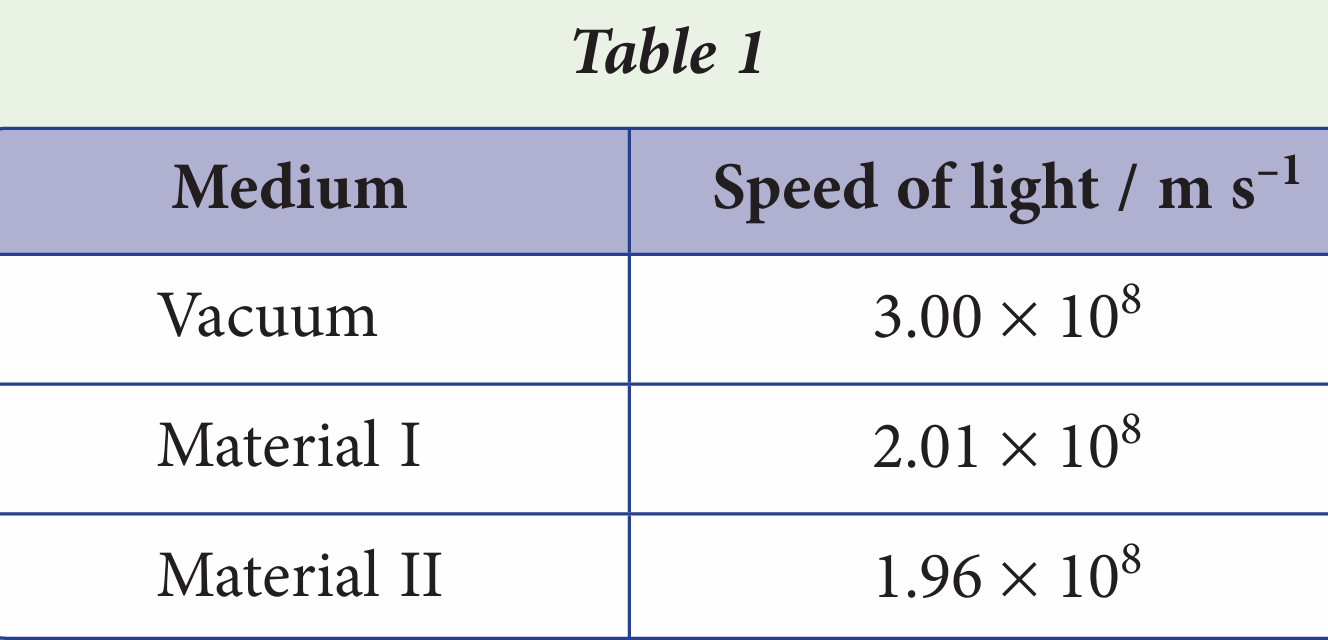Question 9:
(a) Explain the way to construct a compound microscope using two lenses. In your answer, state the type of lens that you chose, estimate the focal length of the lenses and characteristics of the image formed by each lens.
(b) Why is an astronomical telescope not suitable to be used to see distant objects on the surface of the Earth?
(c) How can you modify a compound microscope to become an astronomical telescope?
Answer:
(a)
Two convex lenses with short focal length are chosen.
Objective lens with focal length, fo and eyepiece lens with focal length, fe.
Focal length fo is less than focal length fe.
Distance between objective lens and eyepiece lens is larger than fo + fe.
Object distance is between fo and 2fo.
Objective lens form the first image, I1 which is real, inverted and magnified.
Image I1 becomes the object for eyepiece lens.
Eyepiece lens functions as a magnifying lens. I1 is placed between Fo and the optical centre of the eyepiece lens.
Eyepiece lens forms the final image, I2 which is virtual, magnied and still inverted compared with object O.
(b)
The final image is inverted, therefore less suitable to be used to view distant objects on the surface of the Earth.
(c)
Interchange the positions of the objective lens and the eyepiece lens. Then adjust the distance between the objective lens and the eyepiece lens to become fo + fe.
(a) Explain the way to construct a compound microscope using two lenses. In your answer, state the type of lens that you chose, estimate the focal length of the lenses and characteristics of the image formed by each lens.
(b) Why is an astronomical telescope not suitable to be used to see distant objects on the surface of the Earth?
(c) How can you modify a compound microscope to become an astronomical telescope?
Answer:
(a)
Two convex lenses with short focal length are chosen.
Objective lens with focal length, fo and eyepiece lens with focal length, fe.
Focal length fo is less than focal length fe.
Distance between objective lens and eyepiece lens is larger than fo + fe.
Object distance is between fo and 2fo.
Objective lens form the first image, I1 which is real, inverted and magnified.
Image I1 becomes the object for eyepiece lens.
Eyepiece lens functions as a magnifying lens. I1 is placed between Fo and the optical centre of the eyepiece lens.
Eyepiece lens forms the final image, I2 which is virtual, magnied and still inverted compared with object O.
(b)
The final image is inverted, therefore less suitable to be used to view distant objects on the surface of the Earth.
(c)
Interchange the positions of the objective lens and the eyepiece lens. Then adjust the distance between the objective lens and the eyepiece lens to become fo + fe.
Question 10:
Table 1 shows the speed of light in vacuum and two materials for making optical fibre.

(a) Identify suitable mediums to be used as core and cladding of optical fibre. Explain your answer.
(b) Determine the critical angle of the optical fibre.
(c) Why must the surface of optical fibre be very smooth?
Answer:
(a)
Material I as cladding and material II as core. Refractive index of material I is smaller than refractive index of material II.
(b)
$$ \begin{aligned} (\text { Material } I), \quad n_1 & =\frac{c}{v} \\ & =\frac{3.00 \times 10^8}{2.01 \times 10^8} \\ & =1.49 \end{aligned} $$
$$ \text { (Material II), } \begin{aligned} n_2 & =\frac{c}{v} \\ & =\frac{3.00 \times 10^8}{1.96 \times 10^8} \\ & =1.53 \end{aligned} $$
$$ \begin{aligned} n_1 \sin \theta_1 & =n_2 \sin \theta_2 \\ 1.49 \sin 90^{\circ} & =1.53 \sin c \\ \sin c & =\frac{1.49 \sin 90^{\circ}}{1.53} \\ c & =76.87^{\circ} \end{aligned} $$
(c)
So that all light entering the optical fibre does not escape from places that have depressions (not smooth).
Table 1 shows the speed of light in vacuum and two materials for making optical fibre.

(a) Identify suitable mediums to be used as core and cladding of optical fibre. Explain your answer.
(b) Determine the critical angle of the optical fibre.
(c) Why must the surface of optical fibre be very smooth?
Answer:
(a)
Material I as cladding and material II as core. Refractive index of material I is smaller than refractive index of material II.
(b)
$$ \begin{aligned} (\text { Material } I), \quad n_1 & =\frac{c}{v} \\ & =\frac{3.00 \times 10^8}{2.01 \times 10^8} \\ & =1.49 \end{aligned} $$
$$ \text { (Material II), } \begin{aligned} n_2 & =\frac{c}{v} \\ & =\frac{3.00 \times 10^8}{1.96 \times 10^8} \\ & =1.53 \end{aligned} $$
$$ \begin{aligned} n_1 \sin \theta_1 & =n_2 \sin \theta_2 \\ 1.49 \sin 90^{\circ} & =1.53 \sin c \\ \sin c & =\frac{1.49 \sin 90^{\circ}}{1.53} \\ c & =76.87^{\circ} \end{aligned} $$
(c)
So that all light entering the optical fibre does not escape from places that have depressions (not smooth).
